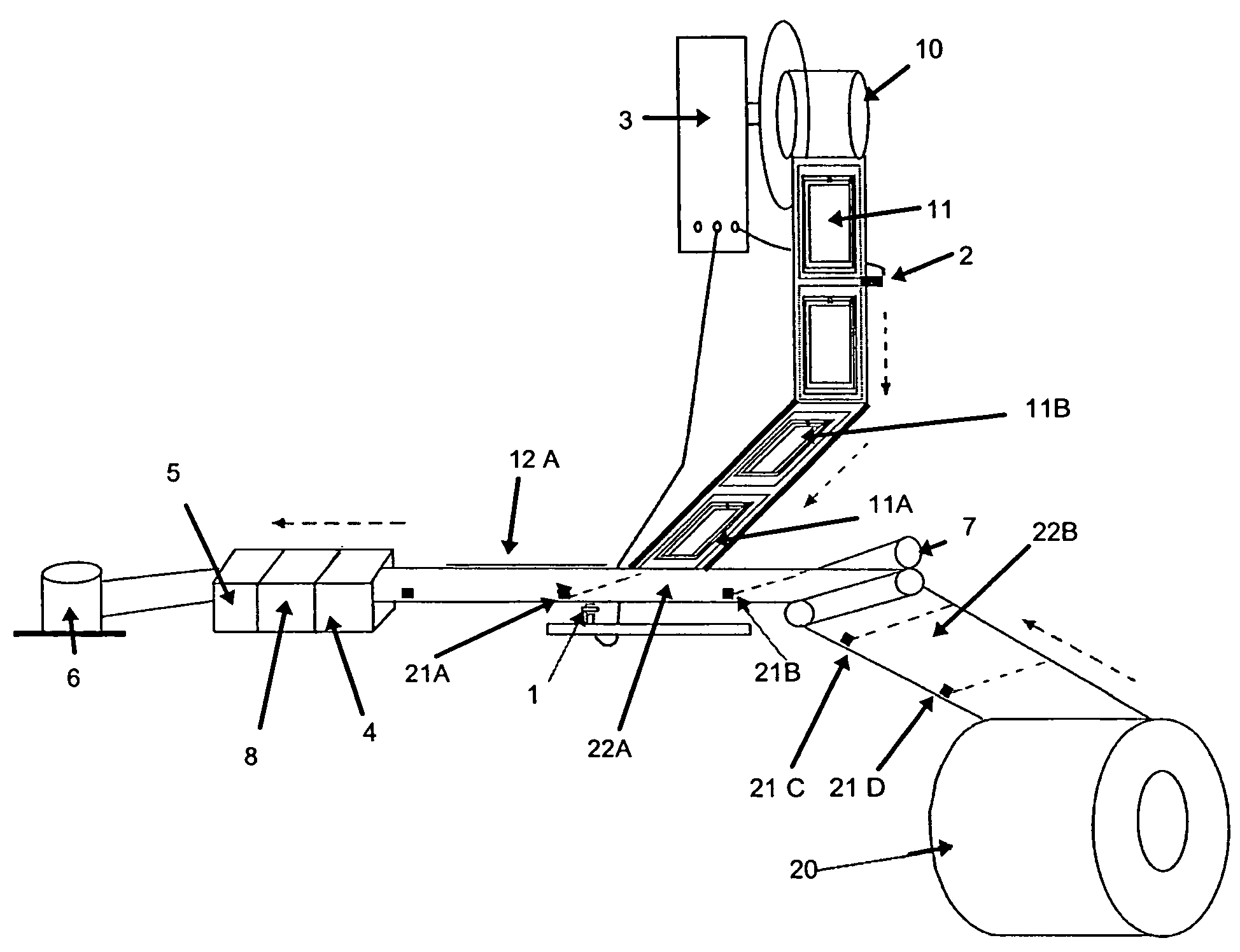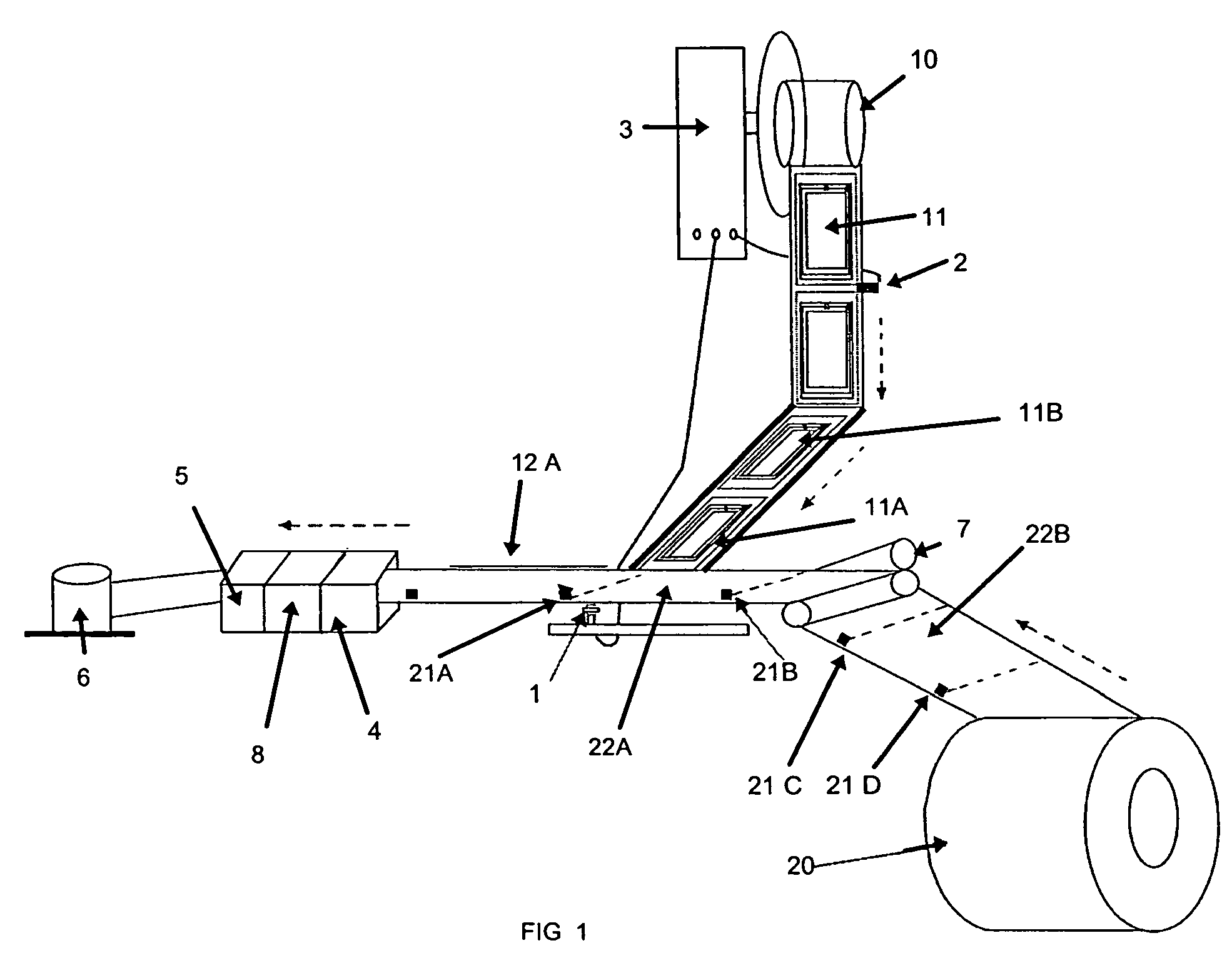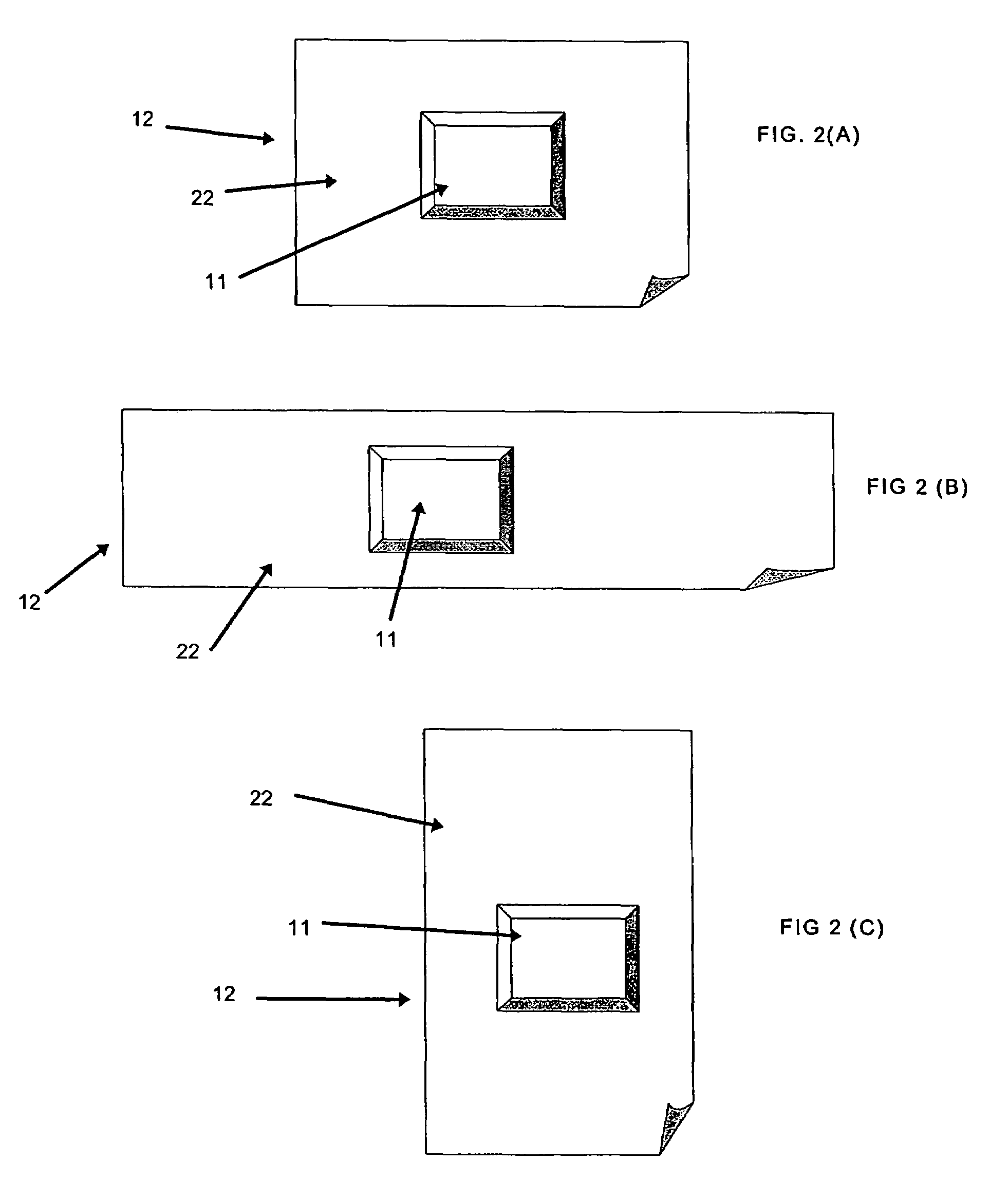System and method for batch conversion of RFID tag to RFID label
a technology of batch conversion and rfid label, which is applied in the field of batch conversion of rfid label to rfid label, can solve the problems of high wastage, no assurance that the calibration remains the same, and difficulty in converting rfid label, so as to reduce the wastage of materials, reduce the cost, and ensure the effect of accuracy
- Summary
- Abstract
- Description
- Claims
- Application Information
AI Technical Summary
Benefits of technology
Problems solved by technology
Method used
Image
Examples
Embodiment Construction
[0054]The inventors having studied the problems associated with batch conversion of RFID tags to RFID labels have proposed using sensors to detect the exact location for the embedding of a RFID tag onto a label and using sensors to control the speed of movement of RFID tags and liner.
[0055]FIG. 1 shows the type of equipment used in the batch process for convert RFID tag to RFID label, and which can be described as follows:
RFID tag dispenser 10 (which dispenses RFID tags 11)
Liner 20 (which have “pitch marks”21 for pitch control and to denote dimensions of the labels )
Roller Modules 7 (to ensure proper alignment of liner 20)
Driver Roller 8 (to ensure proper alignment of liner 20)
a “Pitch Mark” sensor 1 to detect the pitch marks 21 on the liner 20
a RFID dispensing sensor 2 to detect movement of the RFID tags 11 that are being embedded onto the liner 20 in order to dispense more RFID tags 11 from the RFID tag dispenser 10
a PLC Controller 3 connected to the “pitch mark sensor”1 and RFID ...
PUM
 Login to View More
Login to View More Abstract
Description
Claims
Application Information
 Login to View More
Login to View More - R&D
- Intellectual Property
- Life Sciences
- Materials
- Tech Scout
- Unparalleled Data Quality
- Higher Quality Content
- 60% Fewer Hallucinations
Browse by: Latest US Patents, China's latest patents, Technical Efficacy Thesaurus, Application Domain, Technology Topic, Popular Technical Reports.
© 2025 PatSnap. All rights reserved.Legal|Privacy policy|Modern Slavery Act Transparency Statement|Sitemap|About US| Contact US: help@patsnap.com



